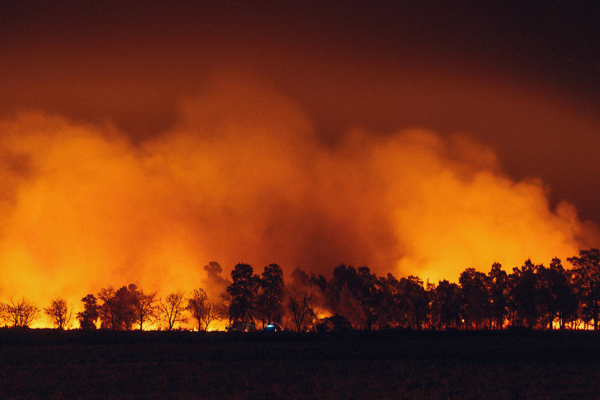Australia has faced damaging floods, fires, storms and other natural disasters over the years. The Black Summer bushfires and the 2022 east-coast floods are still fresh in our minds – not just for the damage they caused, but for the long recovery that followed. Many people were left with injuries, breathing problems, disrupted healthcare, and the emotional toll of losing homes, routines and support networks. In the middle of this chaos, most people think of the first responders, including doctors, firefighters and paramedics. But physiotherapists also play an important part in disaster response and recovery. From falls, burns and crush injuries, to muscle and joint problems caused by evacuation, sleeping in temporary shelters, or physically demanding clean-up work, they are on hand to help with any health issues that come with the disaster. On top of this, existing health issues can flare up when regular appointments stop, equipment is lost, or stress and displacement make managing conditions much harder.
Early physiotherapy can make a big difference. Even simple interventions in the first few days – like safe movement, breathing exercises, or pain management – can help with recovery. Physiotherapists also support communities long after the emergency response teams have left. They help people rebuild strength and mobility and return to work and daily activities.
Subscribe for FREE to the HealthTimes magazine
Key roles in the early response include:
-
Supporting breathing and chest health: Smoke from bushfires, dust and debris, or damp air after floods can cause breathing problems. Physios help people clear their lungs, improve oxygen flow, and reduce the risk of chest infections.
-
Early movement to prevent further harm: When people are injured, stuck in bed, or sheltering in temporary accommodation, stiffness, pain and muscle weakness can set in quickly. Gentle movement and simple exercises early on can prevent complications like joint stiffness, blood clots and pressure injuries.
-
Safe transfers and mobility advice: After a disaster, a hospital or shelter may not have ideal equipment. Physios can teach family or volunteers how to support someone at home.
Once the emergency settles, survivors start of their rehabilitation journey. During this stage, physios:
-
Support recovery after surgery or trauma: People who experience serious injuries may require surgery, casts or splints. Physios guide safe movement, teach pain management strategies, and begin rehabilitation to protect healing tissues.
-
Prevent long-term disability: Early rehabilitation gives people the best chance of returning to daily activities and independence.
-
Work closely with other health professionals: Physios collaborate with doctors, occupational therapists, prosthetists, nurses, social workers and mental health professionals to ensure care is coordinated.
Once the immediate injuries have stabilised, the focus shifts from surviving to rebuilding life. Many people affected by disasters need support long after the headlines. Homes may be damaged, routines disrupted and emotional recovery can take time. In the long-term recovery phase, physios:
-
Help people regain independence: This includes rebuilding strength, balance, mobility and confidence to return to normal daily activities, work, school, sport and community life. Treatment may happen in clinics, temporary hubs, community centres or through outreach visits.
-
Adapt rehabilitation to each person’s circumstances: After a disaster, access to equipment, transport or ongoing therapy can be limited. Physios find creative ways to support recovery, for example, using items at home for exercises or providing telehealth sessions if travel is difficult.
-
Support people with long-term or pre-existing conditions: Disasters can interrupt care for people living with chronic pain, neurological conditions, disability or age-related health issues. Physios help them regain stability and reconnect with ongoing supports.
Across all stages of disaster response, physiotherapists help people move forward physically, mentally and emotionally.
Physical injuries are often the most visible impact of a disaster, but the emotional shock and stress that follow can be just as significant. People may be frightened, overwhelmed, confused, grieving or in survival mode. As one of the early health professionals, physiotherapists are on hand support emotional wellbeing, not just physical recovery.
This is where
Psychological First Aid (PFA) comes in, which is built around three actions that physios can easily integrate into their disaster response work:
-
LOOK: Observe what is happening. Notice signs of distress, confusion, withdrawal, or urgent basic needs (e.g., pain, hunger, exhaustion, warmth, mobility support). Look for safety concerns, family separation, or people who seem alone or overwhelmed.
-
LISTEN: Use calm, compassionate communication. Give the person time to speak. Often, simply being heard can reduce anxiety. Physios might support someone during a mobility assessment or exercise session by gently checking in: “How are you coping right now?”
-
LINK: Help connect the person with practical supports. This could include linking them to medical care, social workers, mental health support, family or community services, transport, or even just helping them find a quiet space to rest.
During recovery, physios often spend more one-to-one time with survivors than many other health professionals. A physiotherapist trained in PFA can:
-
provide reassurance in a calm way
-
recognise when someone needs more than a listening ear
-
encourage people to keep moving, connecting, and engaging with life
-
know when and how to refer to mental health professionals
When a disaster turns someone’s world upside down, recovery is rarely quick or straightforward. Beyond the immediate injuries and shock, people face weeks, months and sometimes years of physical and emotional healing. From the early days in evacuation centres and field hospitals, through trauma rehabilitation and community rebuilding, physios support people at every stage. They bring practical skills that prevent long-term disability, ease pain, and improve breathing and mobility. With the right training, mindset, and willingness to adapt, physiotherapists can make a lasting difference long after the emergency ends.













